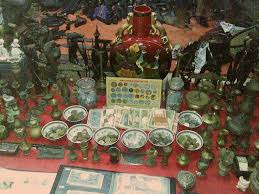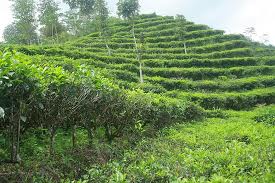
Grandeur of the buildings of archaeological sites with high-value architecture widely available in Sleman, Yogyakarta. One of them, the site
Kraton Ratu Boko, located in the south of Prambanan temple. Besides interesting in terms of architecture, the other attraction is the beauty of the sunset, landscape, and panoramic beauty of nature.
To enjoy the sunset, you have to get on the site Ratu Boko, before 16:00 pm, when the weather is sunny. Point to enjoy the most beautiful sunset is at the gates of
Ratu Boko site. You can take a position on the steps of the gate, in the middle of the gate, or in the upper court after the entry gate. From this location can be seen clearly that the yellow sun like a ball slowly down to earth. Looks beautiful golden light surrounding it, and the fluoresce to the sky.
If you are in courtyard after the entrance gate, you will see the yellow ball is in the site gates. Although the sunset only lasts a few minutes, but its beauty will make a special experience for you, of course, that will not be forgotten. Besides taking up positions around the gate, you can also enjoy the sunset on Pembakaran Temple, the highest point of
Ratu Boko temple.
The position of the site at the top of the limestone hills, you can enjoy the natural scenery is very beautiful. Expanse of farmland looked like tapestry stretched wide under the hills. If your view is directed to the north, seem magnificence Prambanan and Sewu. When the weather is sunny, you can see Mount Merapi, which became the background of
Prambanan Temple.
For those of you who like tracking, Ratu Boko be the right choice. You can navigate not only Ratu Boko temple complex, but also the surrounding complex of temples, including
Candi Ijo,
Banyunibo and
Barong.
Written by: Jogja Holidays
Jogja Holidays, Updated at:
9:42 PM










